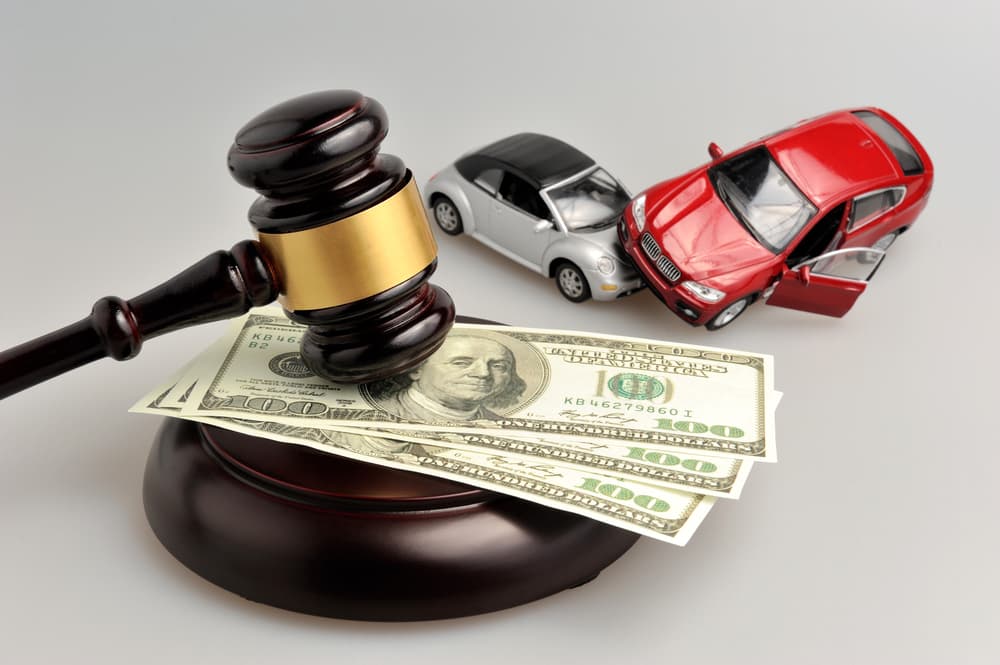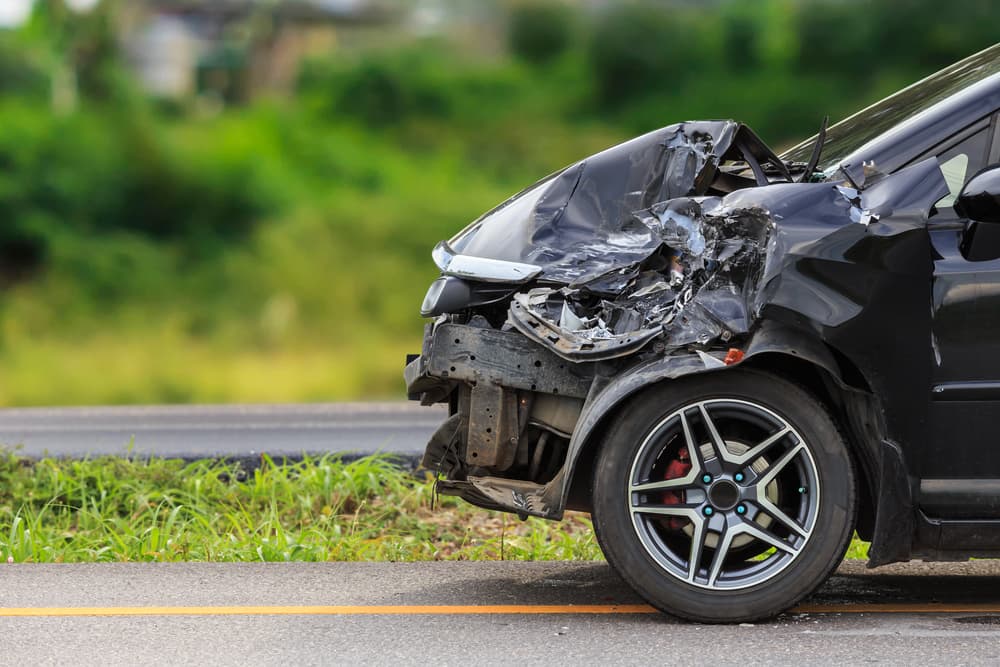After a hit-and-run accident, medical bills and car repair costs can quickly pile up. This is where the assistance of a hit-and-run accident attorney becomes crucial.
Schedule A Consultation Today!
Pursuing Hit-and-Run Compensation Can Get Complicated
The path to compensation after a hit-and-run accident includes a complexity not found in typical traffic accident cases. In most states, victims have the right to seek compensation from the driver responsible for the crash. You can typically achieve this by filing an insurance claim or initiating a personal injury lawsuit. However, when the responsible driver flees the scene, victims are often left in a cloud of uncertainty regarding their compensation options.
An Attorney Can Evaluate Your Case
One of the primary advantages of working with a hit-and-run accident attorney is their ability to conduct a thorough assessment of your unique situation. Hit-and-run accidents may leave victims feeling hopeless, but there are usually avenues for seeking and securing compensation. A seasoned hit-and-run accident attorney with a deep understanding of state and local laws, the intricacies of your insurance policy, and the details of the incident can outline the best course of action for you.
This may involve identifying potential claims against your insurance policy or preparing for a lawsuit should the at-fault driver be located.
Identifying the At-Fault Driver

A key objective in many hit-and-run cases is determining the identity of the at-fault driver. This step can dramatically increase your options for recovery, potentially allowing you to pursue a direct insurance claim or a lawsuit against them.
Hit-and-run accident attorneys use several strategies to uncover the identity of the driver, including:
- Utilizing descriptions of the driver or vehicle provided by the victim or witnesses.
- Gathering information from witnesses who may have noted the vehicle's license plate number.
- Collaborating with law enforcement officials who are investigating the incident.
- Reviewing footage from surveillance cameras that may have captured the collision.
- Investigating reports from local auto repair shops that might receive a damaged vehicle matching the description of the one involved in your accident.
- Conducting their evidence-gathering efforts to piece together the identity of the driver.
A Hit-and-Run Accident Lawyer Can Advocate for Your Best Interests
Even if the responsible driver is unknown, your hit-and-run accident attorney will still advocate for your best interests. Handling insurance claims can be difficult, and insurance adjusters often focus on minimizing the company's payout.
A lawyer experienced in hit-and-run cases will navigate these negotiations skillfully, aiming to secure a fair settlement covering your medical bills, repair costs, and other damages. They understand the tactics used by insurance companies and are prepared to challenge lowball offers, ensuring your needs are front and center.
Types of Recoverable Damages
The compensation you can pursue covers a wide array of tangible and intangible losses. Here's a closer look at the types of damages typically recoverable in crash cases:
- Medical Bills: This includes costs for emergency services, hospital stays, surgeries, medications, and any medical care you've received due to the accident. It also encompasses future medical expenses for ongoing treatments or surgeries.
- Ongoing Care and Support: For injuries that result in long-term or permanent disability, costs associated with rehabilitation, physical therapy, in-home care services, and any modifications needed for your home or vehicle fall under this category.
- Lost Income: Compensation for your lost income due to time away from work while recovering. This also includes loss of earning capacity if your injuries prevent you from returning to your previous job or working in the future.
- Property Damage: The costs to repair or replace your vehicle and any personal property damaged in the accident.
- Pain and Suffering: Compensation for the physical pain and suffering you've endured as a result of the accident.
- Other Non-Economic Damages: This may include compensation for emotional turmoil, loss of enjoyment of life, and other psychological impacts.
The Role of a Hit-and-Run Accident Attorney
Calculating these damages, especially future medical care needs and non-economic losses, requires a nuanced understanding of your case's legal and medical aspects. A hit-and-run accident attorney plays an indispensable role in this process.
Here's how:
- Documentation and Calculation: Your attorney will document all your incurred and projected losses, thoroughly collecting medical records and ensuring every detail is an important part of the process, including employment documents and professional testimonies to support your claim.
- Professional Consultations: Your lawyer may consult medical professionals and economists for complex aspects such as future care needs or the valuation of pain and suffering. These professionals can provide detailed forecasts and valuations that strengthen your case.
- Understanding Uninsured Motorist Coverage: Navigating the specifics of uninsured motorist claims can be tricky. Your hit-and-run accident attorney will decipher the details of your insurance policy, explain how the coverage limits affect your compensation, and manage any applicable deductibles.
- Negotiation and Advocacy: Armed with a comprehensive valuation of your damages, your attorney will negotiate with insurance companies on your behalf. Their experience with similar cases equips them to advocate for a settlement reflecting your losses' extent.
What if I learned who caused my hit-and-run accident?

Discovering the identity of the driver responsible for your hit-and-run accident significantly transforms the dynamics of your case. This development opens up new avenues for pursuing justice and compensation, moving beyond the constraints of relying solely on your uninsured motorist policy.
Here's what unfolds and how it impacts your path to recovery.
The Shift in Legal Strategy
When the identity of the at-fault driver becomes known, the focus of your legal strategy shifts. Instead of navigating the limitations of your insurance policy, you can now directly hold the responsible party accountable.
This shift means your attorney can pursue a broader range of damages directly from the at-fault driver or their insurance company, potentially leading to a more substantial compensation package that fully covers all your losses.
The Role of Law Enforcement and Your Attorney
The breakthrough in identifying the hit-and-run driver often comes from law enforcement's investigative efforts. If the police succeed in determining who caused the accident, they are supposed to inform you of this development. Unfortunately, communication gaps can occur, leaving victims unaware of significant progress in their case.
A diligent hit-and-run lawyer will maintain regular contact with the investigating officers, ensuring any new information is promptly shared and acted upon. If your attorney uncovers the at-fault driver's identity through their investigation—perhaps through witness statements, surveillance footage, or other means—they will inform the police to add this information to the official crash report.
Legal Implications of Identifying the At-Fault Driver
Identifying the driver and including their details in the crash report strengthens your case in several ways.
Firstly, it provides concrete evidence to support your claim, making it harder for the at-fault party or their insurance provider to dispute their liability.
Additionally, if authorities cite the at-fault driver for leaving the scene, it strengthens your case. In that case, this citation can serve as strong evidence of their negligence, further bolstering your position during settlement negotiations or, if necessary, in court.
Pursuing Justice and Compensation
With the at-fault driver identified, you can file a claim against their insurance or, if required, take legal action by filing a lawsuit. This process allows you to seek compensation not just for tangible losses like medical expenses and property damage but also for non-economic damages such as pain and suffering, often not covered under your uninsured motorist policy.
How Can a Lawyer Establish Negligence After a Hit-and-Run Crash?

After a hit-and-run crash, proving that the other driver was at fault is crucial for securing compensation through an uninsured motorist claim with your insurer. Demonstrating negligence involves more than just stating your case; it requires a strategic collection of evidence and a thorough understanding of legal principles.
Negligence forms the bedrock of personal injury law, holding individuals accountable for harm caused by their carelessness or recklessness. Even when the at-fault party flees the scene, making them unidentified, your claim for damages hinges on proving that negligence occurred. This is essential for your uninsured motorist coverage to come into effect and provide the compensation you deserve.
To successfully prove negligence in a car accident case, your lawyer needs to establish four critical elements:
- Duty of Care: The lawyer must show that the at-fault driver owed you a duty of care, typically defined by traffic laws. For instance, drivers are responsible for obeying traffic signals and yielding when required.
- Breach of Duty: Your lawyer must demonstrate that the at-fault driver breached this duty of care by violating traffic laws. An example might be a driver not yielding at a green light when turning left despite the law requiring them to give way to oncoming traffic.
- Causation: Your lawyer must link the breach of duty directly to the accident, showing that the at-fault driver's failure to yield caused the collision.
- Damages: Finally, you must prove that you suffered physical, emotional, and/or financial harm from the crash. This includes fractures, neck injuries, and any associated medical expenses.
To solidify your case, your lawyer will gather and utilize different forms of evidence, such as:
- The police officers who responded to the scene compiled the official accident report.
- Statements from witnesses who saw the crash.
- Photographs capture the accident scene, showing vehicle positions, road conditions, and traffic signals.
- If available, video footage of the accident from surveillance cameras or dashcams.
- An in-depth survey of the accident scene and, when necessary, accident reconstruction analysis to illustrate how the crash occurred.
- Medical records that document the injuries you sustained in the crash.
- Receipts, invoices, and other documentation of your damages provide a clear picture of the financial impact of the accident.
Armed with this evidence, your lawyer can narrate a compelling story of the events leading to your injuries. This narrative is crucial for negotiating with insurance companies and, if necessary, for presenting your case in court.
By organizing and presenting the evidence, your attorney advocates on your behalf, striving to ensure you receive the compensation you are entitled to for your losses. This approach is the backbone of handling uninsured motorist claims, auto liability claims, and lawsuits, aiming to secure justice and financial recovery for victims of hit-and-run accidents.
How Does the Contingency Fee Structure Work for Hit-and-Run Accident Attorneys?
The financial aspects of hiring a hit-and-run accident attorney are a common concern for many victims, especially when they are already facing the burden of medical expenses and other costs related to the accident. The good news is that most hit-and-run accident attorneys operate on a contingency fee basis, designed to ease the worry about upfront legal fees and make legal representation accessible to those who need it most.
Under a contingency fee arrangement, the attorney's payment is contingent upon the successful resolution of your case, meaning their fees are a predetermined percentage of the settlement or court award they obtain on your behalf. This innovative approach ensures that victims can seek justice and compensation without the stress of upfront legal costs.
One of the most reassuring aspects of this payment structure is the "no win, no fee" principle. Simply put, if your attorney does not succeed in winning your case, you are not obligated to pay any legal fees. This arrangement creates a strong alignment between your interests and your attorney's. Your attorney is highly motivated to achieve the best possible result for you since their compensation is bound to the outcome of your case.
Ensure you fully understand how legal fees work for transparency and trust. Before taking on your case, your attorney will explain the contingency fee agreement in detail, including the percentage deducted from your settlement or award and any other potential costs you might be responsible for, such as court fees or expenses related to gathering evidence.
Choosing an attorney who works on a contingency fee basis allows you to focus on your recovery without the added stress of financial strain from legal costs. It also ensures that high-quality legal representation is available to all, regardless of financial situation. By entrusting your case to a skilled hit-and-run accident attorney, you can confidently pursue the compensation you deserve, knowing that your legal team is committed to securing the best outcome for you, motivated by the shared goal of success.
Consult a Hit and Run Accident Lawyer to Explore Your Options

If you've suffered an injury in a crash where the other driver fled the scene, it's important to know that you're not alone—and you have options for seeking compensation. Partnering with a hit-and-run accident attorney can significantly alleviate the burden of navigating the claims process independently.
By consulting with a personal injury lawyer, you can ensure that your rights are protected and that you're taking the necessary steps toward securing the compensation you deserve.
